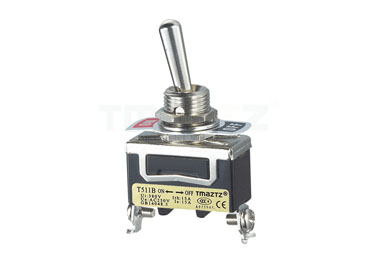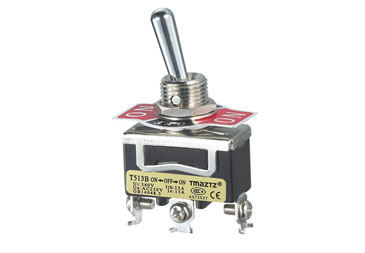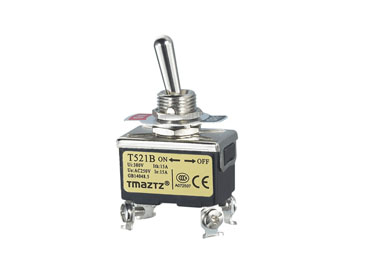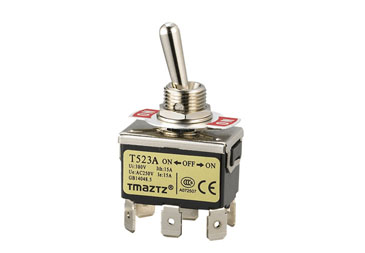What Are Toggle Switches?
Toggle switches are a type of electrical switch that provides a simple and convenient way to control the flow of electrical current in a circuit. They are widely used in various electronic devices, electrical systems, and appliances due to their ease of operation and reliability. In this article, we will explore the fundamentals of toggle switches, their different types, and their applications in different industries and settings.
How Toggle Switches Work
A toggle switch consists of a lever or handle that can be moved back and forth between two positions: "on" and "off." When the toggle is in the "on" position, the switch completes the electrical circuit, allowing current to flow through the connected device or system. Conversely, when the toggle is in the "off" position, the circuit is interrupted, and no current flows.
Toggle switches operate using a mechanical lever mechanism that makes them easy to operate with a simple flick of the finger. The lever typically has a spring-loaded design, allowing it to snap into position when toggled, providing tactile feedback to the user.
Types of Toggle Switches
Toggle switches come in various configurations to suit different applications:
1. SPST (Single Pole Single Throw) Toggle Switch:
This is the most basic type of toggle switch, consisting of a single pole and a single throw. It has two terminals and can either be "on" (current flows between the terminals) or "off" (no current flows).
Quick links: View Toggle switches product category.
T511B On-Off Toggle Switch SPST
2. SPDT (Single Pole Double Throw) Toggle Switch:
SPDT toggle switches have three terminals, with one common terminal and two output terminals. When toggled, the switch can connect the common terminal to one of the output terminals, making it suitable for applications where two circuits need to be controlled independently.
T513B On-Off-On Toggle Switch SPDT
3. DPST (Double Pole Single Throw) Toggle Switch:
DPST toggle switches have two poles and two terminals, each controlling a separate circuit. When toggled, the switch can either connect both poles simultaneously or disconnect both poles simultaneously.
T521B On-Off Toggle Switch DPST
4. DPDT (Double Pole Double Throw) Toggle Switch:
DPDT toggle switches have two poles and six terminals, allowing them to control two independent circuits with three positions: "on-on," "on-off-on," or "off-on."
T523A On-Off-On Toggle Switch DPDT
Applications of Toggle Switches
Toggle switches find widespread use in numerous applications:
1. Electronic Devices:
Toggle switches are commonly used in electronic devices such as audio equipment, amplifiers, radios, and electronic instruments to control power or specific functions.
2. Appliances:
Many household appliances, including lamps, fans, and small appliances, feature toggle switches for easy user control.
3. Industrial Machinery:
In industrial settings, toggle switches are used to control various machinery, motors, and equipment, providing a straightforward and reliable interface for operators.
4. Automotive:
In automotive applications, toggle switches are employed for various functions, such as controlling lights, windshield wipers, and power windows.
5. Aerospace and Marine:
Toggle switches are widely used in aerospace and marine environments for their robustness and dependable performance, controlling various systems and components.
Advantages of Toggle Switches
Toggle switches offer several advantages:
1. Simplicity and Reliability:
Toggle switches have a straightforward design, making them easy to use and highly reliable. Their mechanical operation ensures consistent performance over extended periods.
2. Tactile Feedback:
The tactile feedback provided by toggle switches allows users to feel the switch's position, enabling them to determine its status (on/off) without visual confirmation.
3. Durability:
Toggle switches are constructed using robust materials, ensuring durability even in harsh environments, making them suitable for both indoor and outdoor applications.
4. Cost-Effectiveness:
Toggle switches are cost-effective compared to more complex electronic switches, making them a popular choice for various applications.
Conclusion
Toggle switches are simple yet versatile electrical switches widely used in electronics, appliances, industrial machinery, and automotive applications. Their easy operation, reliability, and durability make them an excellent choice for controlling electrical circuits. With various types available to suit different needs, toggle switches remain an essential component in numerous devices and systems, providing an efficient and user-friendly interface for controlling power and functions.
Frequently Asked Questions (FAQs)
Q1. Can toggle switches handle high electrical currents?
A: Yes, toggle switches are available in various current ratings, and they can handle a wide range of electrical currents, from low power applications to high-power industrial equipment.
Q2. Can toggle switches be illuminated?
A: Yes, illuminated toggle switches with built-in LEDs or lamps are available. These switches provide visual feedback to indicate their on/off status, making them useful in dimly lit environments or for decorative purposes.
Q3. Are toggle switches suitable for outdoor use?
A: Yes, toggle switches designed for outdoor use are available with weather-resistant and corrosion-resistant features. These switches can withstand exposure to moisture, dust, and extreme temperatures, making them suitable for various outdoor applications.
Whether you’d like to get more info on what, why and how we do what we do, need help with what you’re creating, Would like to partner up or just say hi! ---we’d love to hear from you.
Welcome to call us on 0086-0577-6296-2298 to speak to our Sales Engineers or e-mail us on bill@tmaztz.com alternatively, leave us a message using our online contact form.
View our full product range here.






